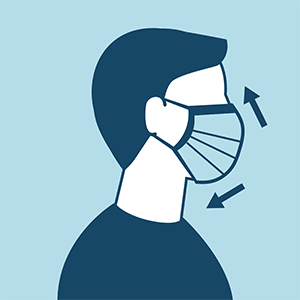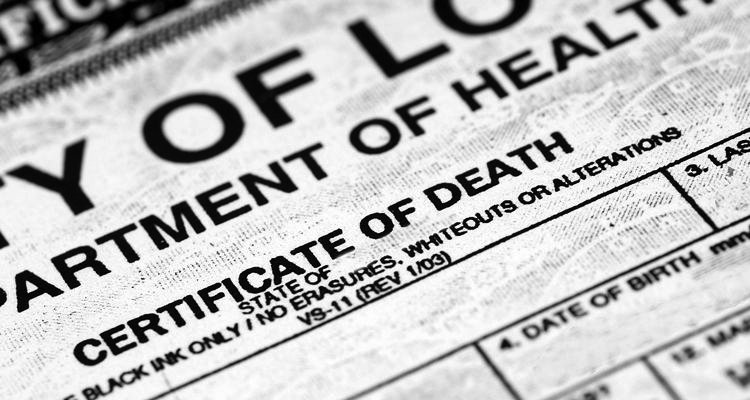Even before Barton County logged its first death related to COVID-19, readers have asked how the cause of death is determined and whether the numbers are accurate.
The U.S. Department of Health and Human Services offers guidance for certifying deaths due to COVID-19.
“Similar to many other diagnoses, a cause-of-death statement is an informed medical opinion that should be based on sound medical judgment drawn from clinical training and experience, as well as knowledge of current disease states and local trends.”
Part I of the death certificate includes “the immediate cause of death, which is the disease or condition that directly preceded death and is not necessarily the underlying cause of death. ... The UCOD is (a) the disease or injury which initiated the train of morbid events leading directly to death or (b) the circumstances of the accident or violence which produced the fatal injury.”
Other significant conditions that contributed to the death may be listed on Part II, but only conditions that actually contributed to death should be reported.
The guidelines emphasize that monitoring the emergence of COVID-19 in the United States and guiding public health response requires accurate and timely reporting.
Kansas definition
The Great Bend Tribune asked what criteria Kansas uses to determine what constitutes a COVID-19 death.
This answer was provided by Kristi Zears, director of communications at the Kansas Department of Health and Environment:
“For death classification (and case classification) we utilize the Council of State and Territorial Epidemiologists (CSTE) surveillance case definition (Interim-20-ID-01). Death counts include: a person whose death certificate lists COVID-19 disease or SARS-CoV-2 as a cause of death or a significant condition contributing to death in addition to having either 1) confirmatory laboratory evidence, 2) presumptive laboratory evidence with compatible symptoms or epidemiologic evidence, or 3) no laboratory testing for COVID-19 in a person with COVID-19 compatible symptoms and epidemiologic evidence (i.e. epidemiologic linkage).
National Vital Statistics System
The Centers for Disease Control cites this information from the National Vital Statistics System:
Mortality statistics are compiled in accordance with World Health Organization (WHO) regulations specifying that WHO member nations classify and code causes of death with the current revision of the International Statistical Classification of Diseases and Related Health Problems (ICD). ICD provides the basic guidance used in virtually all countries to code and classify causes of death. It provides not only disease, injury, and poisoning categories but also the rules used to select the single underlying cause of death for tabulation from the several diagnoses that may be reported on a single death certificate, as well as definitions, tabulation lists, the format of the death certificate, and regulations on use of the classification.
Coronavirus disease deaths are identified using the ICD–10 code U07.1. Deaths are coded to U07.1 when coronavirus disease 2019 or COVID-19 are reported as a cause that contributed to death on the death certificate. These can include laboratory confirmed cases, as well as cases without laboratory confirmation. If the certifier suspects COVID-19 or determines it was likely (e.g., the circumstances were compelling within a reasonable degree of certainty), they can report COVID-19 as “probable” or “presumed” on the death certificate.
This source also notes that “deaths due to COVID-19 may be misclassified as pneumonia or influenza deaths in the absence of positive test results, and pneumonia or influenza may appear on death certificates as a comorbid condition.” Comorbidity is defined as the simultaneous presence of two chronic diseases or conditions in a patient. “Additionally, COVID-19 symptoms can be similar to influenza-like illness, thus deaths may be misclassified as influenza. Thus, increases in pneumonia and influenza deaths may be an indicator of excess COVID-19-related mortality.”


Protect yourself and others
The best way to prevent COVID-19 is to avoid being exposed to the virus. Take the following steps to minimize your risk:
• Stay home as much as possible.
• Wash hands frequently with soap and water for at least 20 seconds. If soap and water is not available, use hand sanitizer with at least 60% alcohol.
• Avoid touching your eyes, nose and mouth.
• Distance yourself from others when in public, especially if you are a senior or have a medical condition that puts you in a high-risk category.
• Cover your mouth and nose with a cloth mask when in public.
• Cover coughs and sneezes with an elbow or tissue. Throw the used tissue away and immediately wash your hands.
• Clean and disinfect frequently touched surfaces daily – including phones, keyboards, doorknobs, handles and light switches – with an EPA-registered disinfectant.




